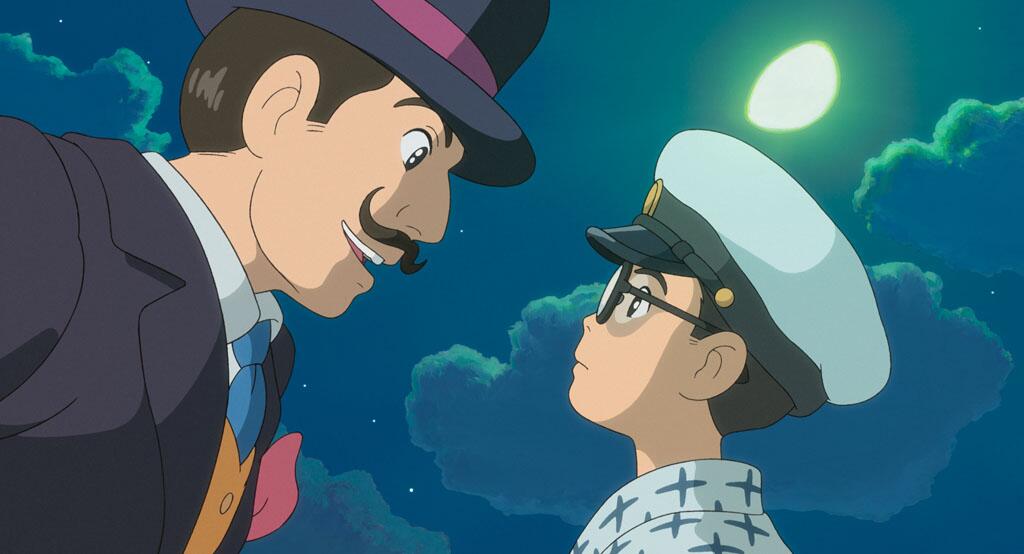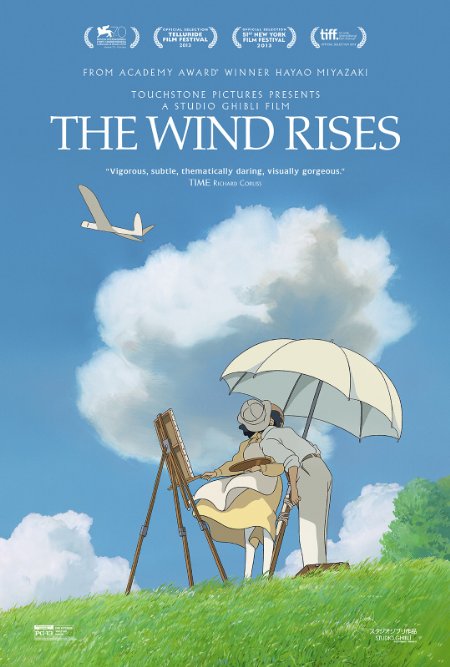Jiro Horikoshi is a name that most Americans have never heard. I wouldn't feel bad if you haven't heard of him, I had no idea who he was either. I do, though, know a little bit about World War II history. In the early years of the war the Japanese were able to dominate the air through the use of the revolutionary Mitsubishi A6M "Zero" fighter. Its great speed and agility made it an infamous plane, with superior dogfighting capabilities, and used with terrible results in the Japanese "kamikaze" suicide attacks. Horikoshi designed the "Zero", among other airplanes of the era, and his contributions to aviation have mostly gone uncelebrated outside of Japan.
Master Japanese filmmaker, Hayao Miyazaki, director of classics like Princess Mononoke, Spirited Away and My Neighbor Tortoro, has chosen for his latest and supposedly final feature film, to tell the world about Jiro Horikoshi's life. The end result is nothing less than what we've come to expect from one of the greatest animators of all time. The Wind Rises feels completely different from his previous movies, though it does contain many familiar stylistic touches. Being essentially a bio-pic, it departs from the fantastical fairy tales of Miyazaki's earlier work, and grounds itself more in reality which is usually not found in his movies.
The film opens on Jiro (voiced by Joseph Gordon-Levitt) as a child, dreaming what will be the first of several dreams he'll have about becoming a great aviation engineer. In all of the dream sequences he meets his hero, Italian aeronautical innovator, Capaldi (Stanley Tucci), who inspires Jiro to pursue his goals of going to school and designing aircraft. It is in these segments of the movie where we see the abstract flourishes we've come to recognize in Miyazaki's pictures come to life. Capaldi, himself, is a larger-than-life character. The planes he creates in Jiro's unconscious mind are extravagant and over-the-top, but they serve to inspire the young boy to continue down the path he has set for himself.
 |
| A young Jiro has dreams where his idol, Capaldi, a pioneer in Italian aviation, comes to him and encourages him to pursue his goals of being a great aeronautical engineer. |
There is one particular scene involving Jiro's wooing of Nahoko that is so well done. He fashions a paper airplane and tries to throw it up onto her balcony. Once he succeeds the two of them take turns throwing the plane back and forth. It is a perfect example of Miyazaki's effortless ability to express simple emotions in animation with very little dialogue.
 |
| Jiro tries to shoot his paper airplane onto Nahoko's balcony. |
The subject of World War II is never really fully brought up. Jiro simply wants to build a plane that the world has never seen before. He understands that this invention of his will be used for the mass killings of thousands of people but he chooses to press on. In one key scene where he is dreaming of Capaldi again, his imaginary mentor asks him, "Would you rather live in a world without the Pyramids?" Meaning, if you have the chance to create something that would be so brilliant and remembered forever, but would cause death and misery to many, would you rather live in world without that thing you created? It is an interesting moral question, and is one that Miyazaki appears to be quite interested in.
 |
| Jiro looks down at the destroyed result of his creation. |
The Wind Rises, if it is Miyazaki's last film as he has said, is the perfect bookend to an extraordinary career. At once it feels both familiar and brand new to a fan like myself who has seen most of his pictures. It is as if he wanted to make an epic biography of this man that was both realistic and also somewhat abstract at times. For example, many of the sound effects like the airplane propellers and engine noises were made by human voices. It gives the film the slight fairy tale feeling that Miyazaki's other movies are full of, but this one eschews mostly.
There are some very serious themes being presented in The Wind Rises. Love, death, grief, ambition, guilt, and friendship all resonate quite strongly. It really straddles the line of actually being a children's movie. In fact, I wouldn't be surprised that many kids may not like it, due to the length and more adult subject matter. But, despite this, Miyazaki doesn't abandon the childlike sensibility that is his trademark.
Like many of his previous films, I loved The Wind Rises. Very few filmmakers have the ability to transport you to a world, or a time or place that feels wholly original like Hayao Miyazaki. I am sad that this will be his final movie, but it looks like his son, Goro Miyazaki (From Up on Poppy Hill, Tales From Earthsea) and other talented people at Studio Ghibli will be continuing on his legacy by making more animated features. At least we have this one last masterpiece to cherish, and a collection of work that will be celebrated for years to come.

No comments:
Post a Comment